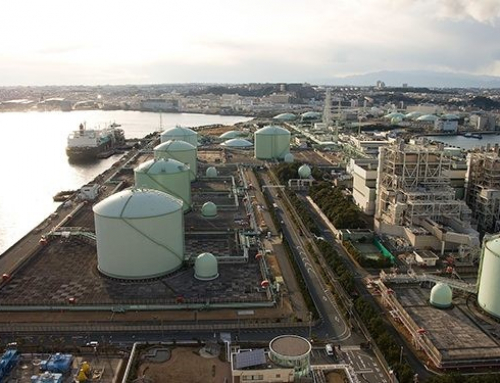
Shell-oil-rig offshore Caliifornia
This article first appeared on the https://climatenewsnet@theenergymix website
Primary Author: Compiled by Mitchell Beer @mitchellbeer
‘Big Oil’ is showing initial signs of a transition to ‘Small Oil’, as a handful of large European fossil fuel companies invest windfall revenues from high oil prices to begin their shift to lower-carbon investments—even if Canadian fossils still haven’t got the memo.
“Surging oil and gas prices in 2021 delivered billions of dollars in profits to top oil companies,” and “typically, companies would invest the lion’s share of that cash in long-term projects to boost oil and gas production and reserves,” particularly after a year of deep cuts brought on by the pandemic, Reuters reports.
“But unlike any other time in their history, BP, Royal Dutch Shell, TotalEnergies, Equinor, and Italy’s Eni are focusing on returning as much cash as possible to shareholders to keep them sweet as they begin a risky shift toward low-carbon and renewable energy.”
Over the last couple of years, many of the same colossal fossils—particularly BP and Shell—have been scorched for publishing high-profile energy transition plans that made grand claims for their commitments to renewables, but still directed the lion’s share of their investment toward exploring for new oil and gas fields. As recently as October 2019, Shell CEO Ben van Beurden defiantly claimed his company had “no choice” but to invest in new, long-lasting fossil projects, while decrying the “demonization” of oil and gas and “unjustified” worries that the company’s business model was unsustainable.
Now, just over two years later, “we are not minded to invest in a big way in a rising market because we believe that by the time we can start to harvest it, we will be beyond that peak again,” van Beurden says.
In late December, oil analysts at Rystad Energy said reduced exploration investment in 2021 had brought new oil and gas discoveries to their lowest point since 1946, the Institute for Energy Economics and Financial Analysis reported—although the industry was still averaging 425 million barrels per day of new finds.
“The growing pressure from investors, activists, and governments to tackle climate change means European oil giants are turning off the taps on spending on oil even as the outlook for prices and demand remains robust,” Reuters writes. “The two-pronged strategy of reducing oil output and boosting shareholder returns was underscored when Shell sold its Permian shale oil business in the United States for US$9.5 billion in September, promising to return US$7 billion to investors.”
With investment in new projects declining, projections show the top five EU fossils’ oil production peaking at about seven million barrels per day in 2025 before falling more than 15%, to below six million barrels, by 2030, although natural gas output is still expected to rise. “Oil executives are aware of public pressure, their environmental responsibilities, and the opprobrium that any major new work could bring,” said AJ Bell investment director Russ Mould.
Not all of the world’s biggest publicly-traded oil companies are following the EU fossils’ lead, with U.S.-based ExxonMobil and Chevron planning to “continue plowing money into new oil projects,” while simultaneously boosting shareholder dividends, Reuters writes. At least one of those two is facing sustained pushback, with a leading pension fund executive warning companies like Exxon late last month that they must “get their act together and become energy companies, not just oil and gas firms” if they want to survive.
But while European fossils, at least, begin adapting to the accelerating global shift off carbon, Canadian tar sands/oil sands producers are taking advantage of short-term demand for their product, with a new shipping route through the U.S. Gulf Coast allowing them to boost sales to Asian markets like India, China, and South Korea, Bloomberg reports. Shipments increased to 266,000 barrels per day in December, a big jump from an average above 180,000 throughout last year.
“Looking ahead, Canadian crude exports out of the U.S. Gulf should continue to show strength,” said oil analyst Matt Smith of fossil analytics firm Kpler. “With Venezuelan crude exports having tanked in recent years, and now with the prospect of Mexican crude being taken off the market, Canadian crude appears to be one of the leading beneficiaries of these changing dynamics




